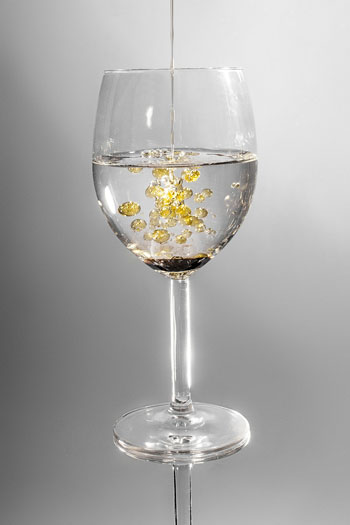 Many Essential Oil companies today promise that their products are organic, natural, 100% pure and so on. Yet, it is hard to tell how their products are made and how natural they really are. Usually a lab test is required to find out exactly what manufacturing process was used in producing various essential oils. So we have developed a quick test you can do yourself very easily to test the oils you already have or are planning on buying. This test is by no means an exact one, but in the absence of exact lab equipment it is a quick way to try and figure out if the essential oil is naturally pressed or made using various solvents.
Many Essential Oil companies today promise that their products are organic, natural, 100% pure and so on. Yet, it is hard to tell how their products are made and how natural they really are. Usually a lab test is required to find out exactly what manufacturing process was used in producing various essential oils. So we have developed a quick test you can do yourself very easily to test the oils you already have or are planning on buying. This test is by no means an exact one, but in the absence of exact lab equipment it is a quick way to try and figure out if the essential oil is naturally pressed or made using various solvents.
Essential oil manufacturing can be a costly process, especially when using extraction methods such as cold press, steam or the new novel CO2 extraction process. A large amount of raw materials is needed to extract a relatively small amount of oil when done naturally. Plant material is processed in a very gentle way that preserves the potency of the ingredients in the final product. This process results in a large amount of waste and makes the manufacturing process very expensive. There is now even a new term to describe truly 100% cold pressed essential oils—some started calling them Absolute Oils and they tend to be rather expensive.
However, this is not the only way to produce essential oils and some companies may not want to invest in this costly and slow process, so they choose an easier way.
Various alcohols and solvents can used to completely dissolve raw plant matter. Most often, it is propylene glycol which is an alcohol with 2 (OH) oxidizing groups. In comparison, rubbing alcohol only has 1 (OH) group, and we all know how harsh it is. After dissolving the plant material, the solution is synthesized into essential oils. Unfortunately, as a result of this process the (OH) groups would have already oxidized anything of value the plant matter contained. This formulation can still have the aroma of the plant, but none of the benefits that the original plant used to deliver.
 So now to the important part—how do we tell the pressed oils from the ones that were produced using solvents?
So now to the important part—how do we tell the pressed oils from the ones that were produced using solvents?
Although it is difficult to test the oils without complex lab equipment, there is a difference in the behavior of the oils when examined in water. Solvents tend to mix well with water and naturally pressed oils do not. Use a simple glass of water, preferably at eye level. When a drop of oil hits the surface of the water in the glass, observe how the oil behaves. 100% natural oils that have never been treated with propylene glycol or similar solvents will coat the surface of the water and not sink. Oil and water do not mix, so oil will stay on top. You will also notice an immediate explosion of fragrance.
Essential oils that were manufactured using solvents behave differently when tested in this manner. Since most solvents used in this process tend to be alcohols, such as propylene glycol, they tend to dissolve in water fairly easily. When a drop of such essential oil hits the surface of water, it will begin to dissolve, creating a halo of oil around the drop area. You should also be able to observe a “tail” underneath the drop of oil – that is the solvent part of the formula mixing with water. The more saturated the color of the oil, the easier it is to see this solvent “tail”. In lighter, more transparent oils, the “tail” may not be as visible, so look for opacity rather than color. The fragrance will not be nearly as pronounced as with naturally derived essential oil.
Although such essential oil still smells great and can be used in aromatherapy, it may not be nearly as useful in treating various conditions many people like to use essential oils for.
Please remember that this test is not 100% accurate for testing every essential oil as many oils maybe be processed using a combination of various methods. Please be sure to check with the manufacturer for more information about a particular oil.
Please click here for comparison information on various Essential Oils presented by Consumer's Advocate (ConsumersAdvocate.org).
